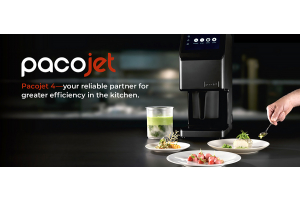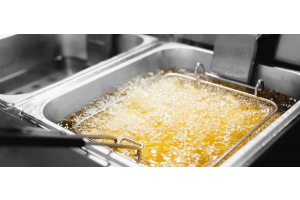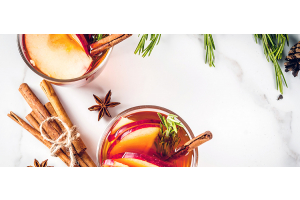Safe Food
Food safety is a critical component in providing food. For establishments, it is easy to concentrate on customer service & presenting dishes to customers. However, not getting the food safety element right will leave a lasting customer experience that's not only unpleasant but can put the entire business at risk.
Safe Food by Pip Duncan is an important and user-friendly textbook on Food Safety. Its goal is to ensure all staff, not only understand the importance of keeping food safe for service but also having the right tools to do so.
We have copies of this book to give away - keep your eyes on our Facebook page for many giveaways of Safe Food! While stocks are available.
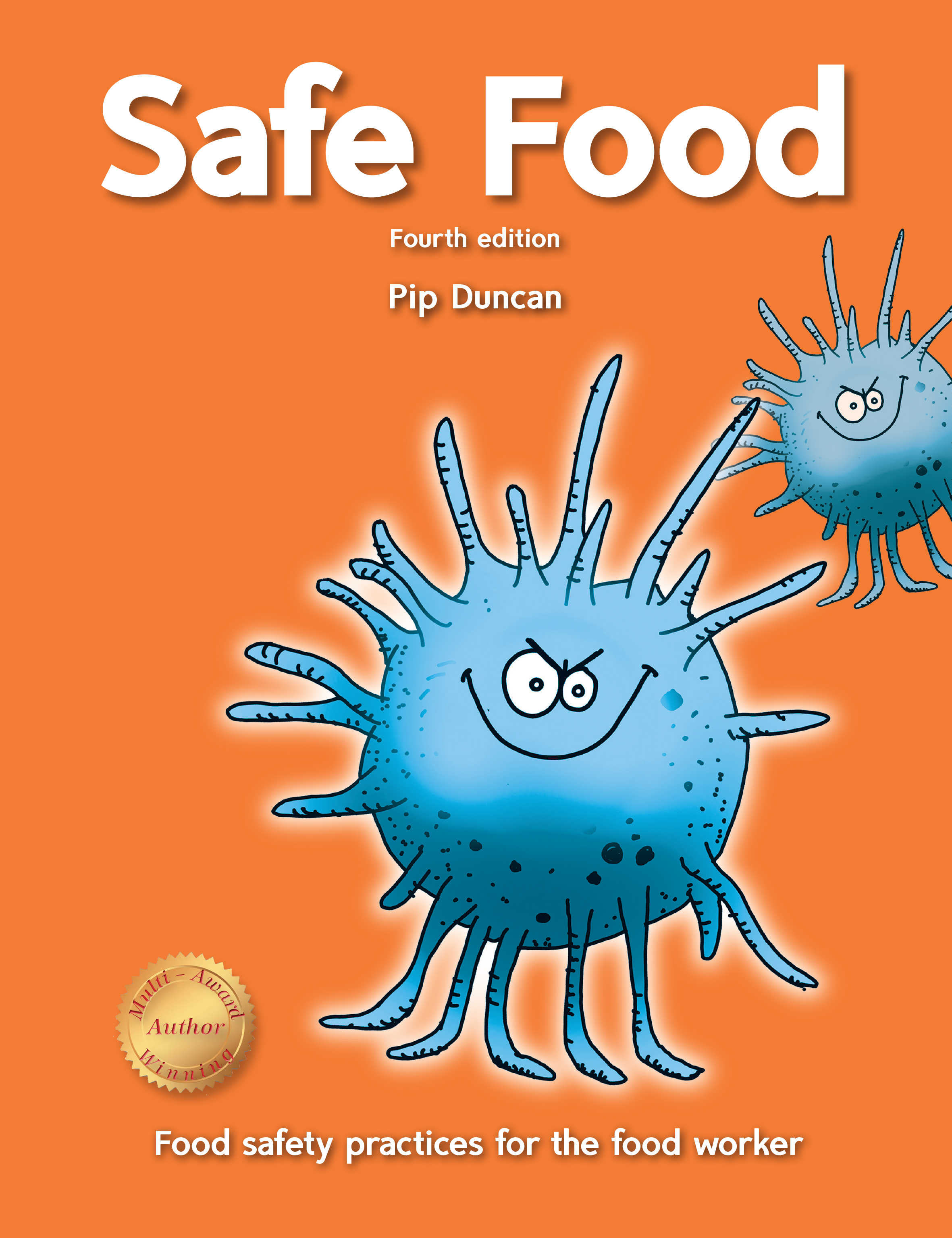
Cross-contamination
Cross-contamination happens when something clean comes into contact with something dirty and should be avoided at all times. It is essential to have and practise the highest standards for personal hygiene and clothing, purchasing and storage practices, preparation and cooking methods, and cleaning and sanitising methods.
Check out our selection of colour-coded Cutting/chopping boards, Knives, Scoops & Tongs. Colour coding kitchenware is a long-standing favourite; e.g. red for raw meat & blue for fish. Keep your kitchen categorized & organised effectively to reduce the risk of cross-contamination.
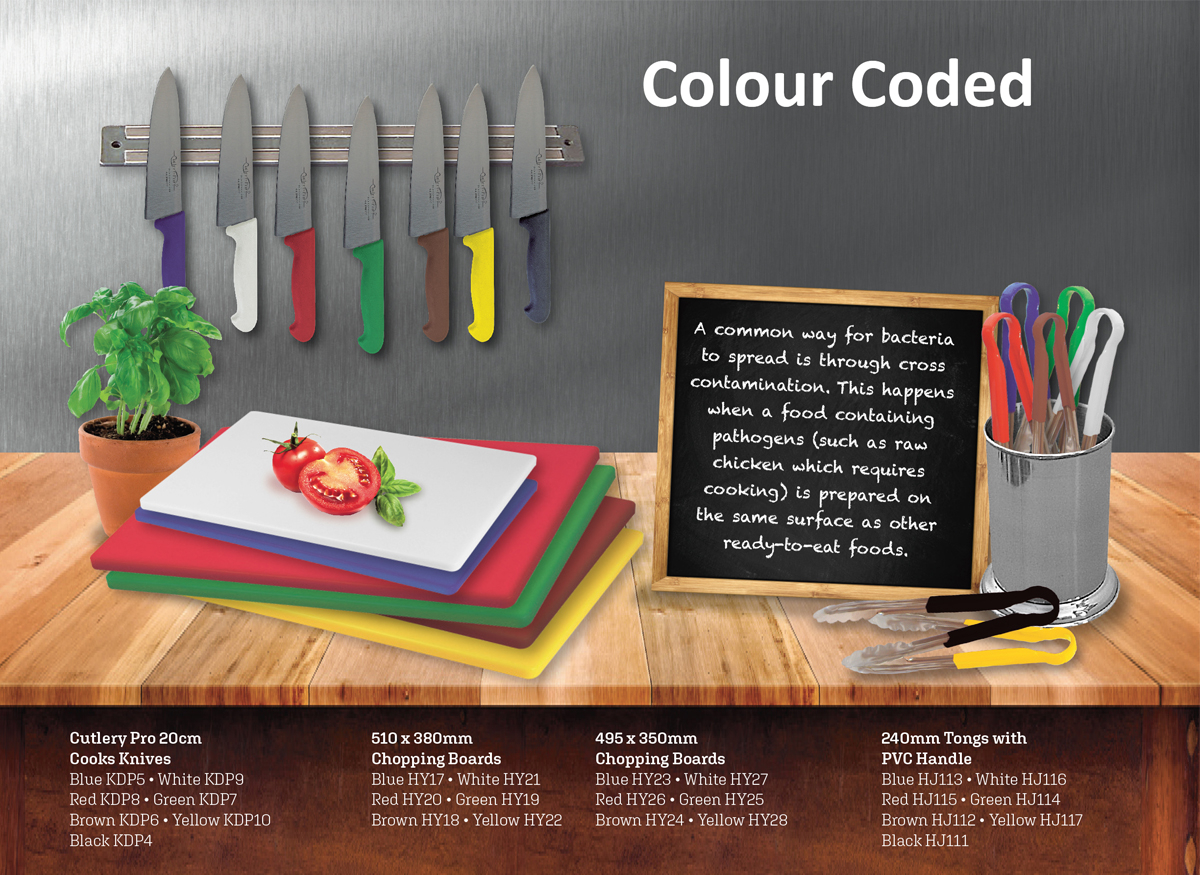
Bacteria Growth
Like us, bacteria like warm temperatures and they grow in the danger zone, between 5° C to 60° C, they particularly grow well between 20 and 40° C. Bacteria will die above 75° C and will not grow at –18° C. However they wait until they have food, moisture and time to grow again! Bacteria can multiply every 20 minutes in favourable conditions. So after one-hour bacteria can multiply into around eight and after three hours, there could be 512 bacteria, etc.
Temperatures are pivotal in the kitchen whether it be raw foods, cooked foods, chilled and stored foods as well as cooking and storage equipment like ovens, fridges, and freezers.
We have a selection of digital probe thermometers, infrared thermometers, Fridge/Freezer Hanging Thermometers & Don't forget probe wipes!
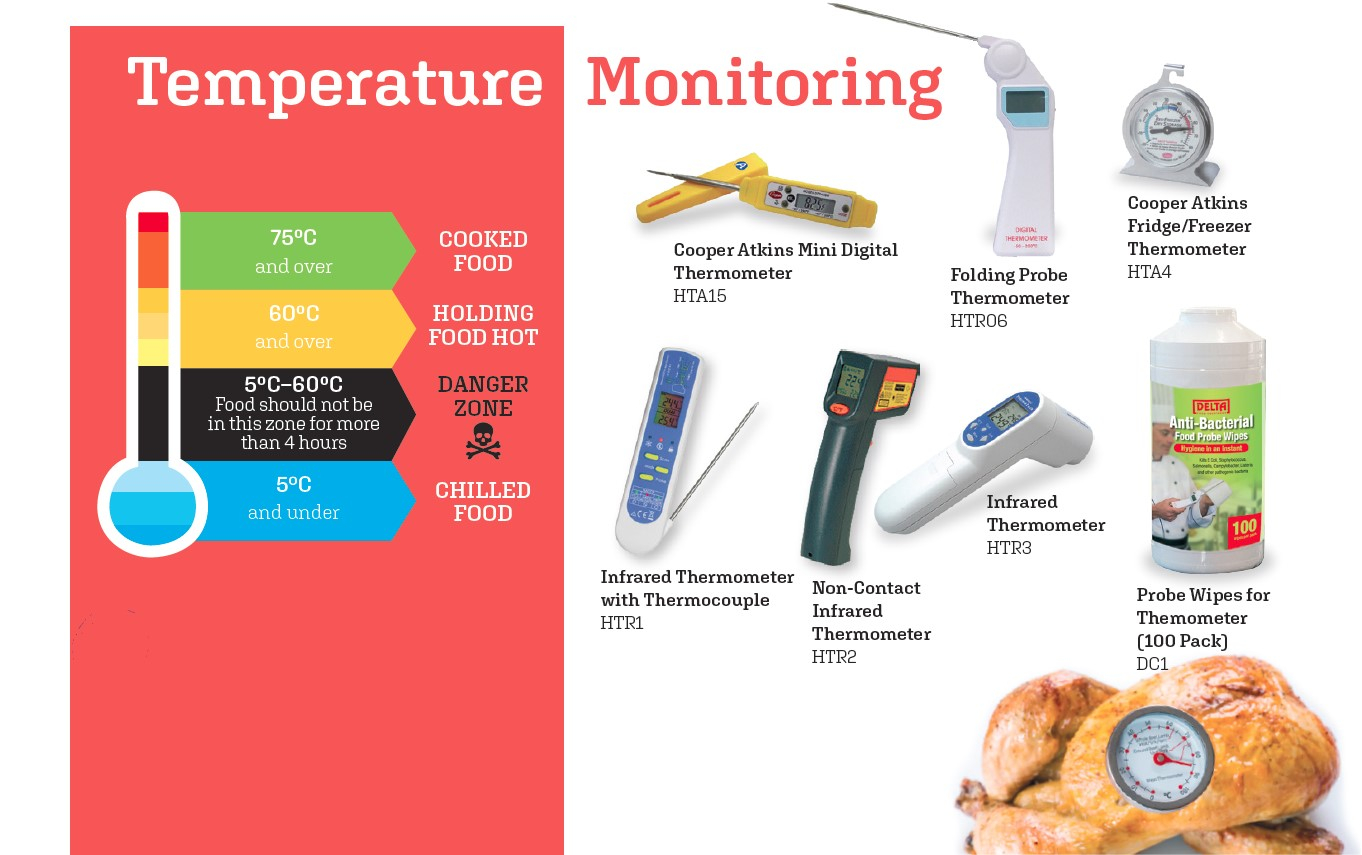
Labels
The chiller culture - It’s a ‘no-no’ to just pop food in the fridge and get it later. Those days have gone! Any leftover food, planned or unplanned, should be covered, labelled and dated if it is being kept. The Food Safety Programmes in each workplace are explicit in their receiving, storing, preparing and cooking foods and service procedures. Food storage includes the dry store or pantry, fridge or chiller, and freezer.
Don’t overlook the value of labels. Labelling food before storage keeps track of how old it is and used alongside the ‘first in first out’ rule, helps to ensure old stock is used first. Labels might be ‘use by’ ‘use first’, or 7-day labels. Date labels are becoming increasingly popular, and with sustainability coming to mind, what type of label is best for you? It pays to consider whether they are recyclable food waste, or mixed paper and card varieties. Check out our full range of food labels here

Education
Colourful posters can be a constant reminder to all members of the team to keep food safe.
Create awareness of safe food practices in your workplace by using colourful posters. Posters such as hand washing reminders, safe refrigeration, colour coded boards and utensils provide useful reminders of important parts of the food safety plan.
Educate staff by placing our range of safety posters, & keep a record with our logbooks
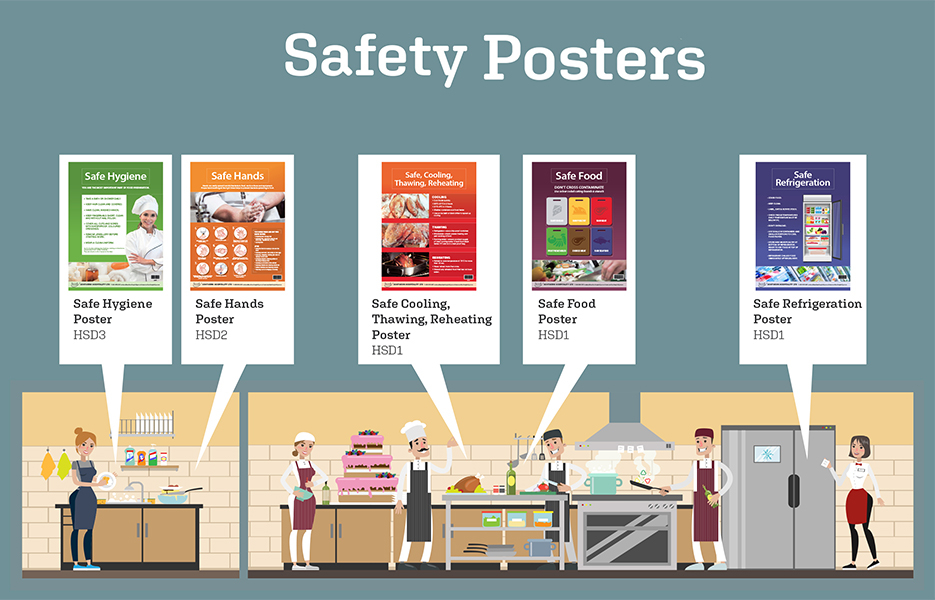
For more information on Safe Food by Pip Duncan please visit: www.safefood.nz. Be sure to check out our Facebook as we are giving away 4 copies every month! While stocks are available.

